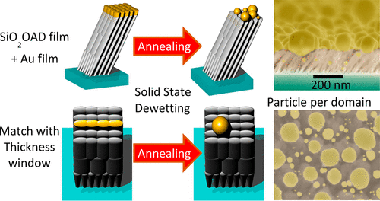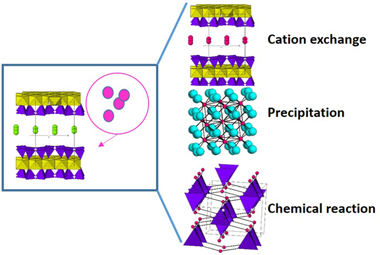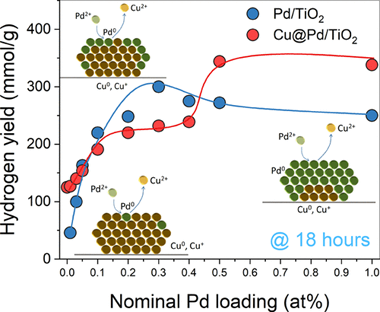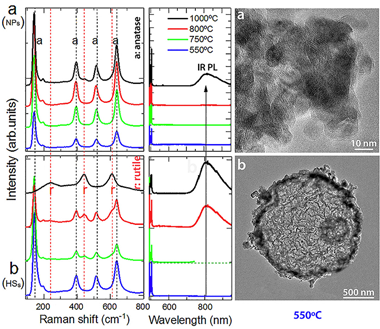Scientific Papers in SCI
2021
2021
Nanotecnología en Superficies y Plasma
Solid-State Dewetting of Gold on Stochastically Periodic SiO2 Nanocolumns Prepared by Oblique Angle Deposition
Oliva-Ramirez, M; Wang, D; Flock, D; Rico, V; Gonzalez-Elipe, AR; Schaaf, PACS Applied Materials & Interfaces, 13 (2021) 11385-11395
Show abstract ▽

Solid-state dewetting (SSD) on patterned substrates is a straightforward method for fabricating ordered arrays of metallic nanoparticles on surfaces. However, a drawback of this procedure is that the patterning of substrates usually requires time-consuming and expensive two-dimensional (2D) fabrication methods. Nanostructured thin films deposited by oblique angle deposition (OAD) present at the surface a form of stochastically arranged periodic bundles of nanocolumns that might act as a patterned template for fabricating arrays of nanoparticles by SSD. In this work, we explore this concept and investigate the effect of three different types of OAD SiO2 thin films on the SSD of Au deposited on their surface. We demonstrate that the size and spatial distribution of the particles can be tailored through the surface morphology of these OAD film substrates. It has been found that the SSD of the evaporated Au layer gives rise to a bimodal size distribution of particles. A majority of them appeared as mesoparticles with sizes.100 nm and the rest as nanoparticles with similar to 10 nm, respectively, located either on top of the nanocolumns following their lateral distribution (i.e., resulting from a patterning effect) or incorporated inside the open mesopores existing among them. Moreover, on the SiO2-OAD thin films where interconnected nanocolumnar bundles arrange in the form of discrete motifs, the patterning effect gave rise to the formation of approximately one Au mesoparticle per motif, which is one of the assets of patterned SSD. The morphological, optical (i.e., plasmon resonance), and crystalline structural characteristics of Au mesoparticles suggest that the interplay between a discontinuous nanocolumnar surface acting as a template and the poor adhesion of Au onto SiO2 are key factors for the observed template effect controlling the SSD on the surface of OAD thin films.
March, 2021 | DOI: 10.1021/acsami.0c19327
Materiales de Diseño para la Energía y Medioambiente
Zirconium retention for minimizing environmental risk: Role of counterion and clay mineral
Montes, L; Pavon, E; Cota, A; AlbaChemosphere, 267 (2021) 128914
Show abstract ▽

Zr(IV) together with U(IV) are the major components of high-level radionuclide waste (HLRW) and spent nuclear fuel (SNF) from nuclear power plants. Thus, their retention in the waste disposal is of great importance for the environmental risk control. Here, the influence of clay minerals on the retention of Zr(IV), as component of the nuclear waste and as chemical analogues of U(IV), has been evaluated. Three clay minerals, two bentonites and one saponite, were hydrothermally treated with three zirconium salts. A structural study at long-range order by X-ray diffraction and short-range order by NMR was performed to evaluate the generation of new zirconium phases and degradation of the clay minerals. Three immobilization mechanisms were observed: i) cation exchange of ZrO2+ or Zr4+ by clay minerals, ii) the precipitation/crystallization of ZrO2, and, iii) the chemical interaction of zirconium with the clay minerals, with the formation of zirconium silicates.
March, 2021 | DOI: 10.1016/j.chemosphere.2020.128914
Materiales y Procesos Catalíticos de Interés Ambiental y Energético
Overcoming Pd-TiO2 Deactivation during H-2 Production from Photoreforming Using Cu@Pd Nanoparticles Supported on TiO2
Platero, F; Lopez-Martin, A; Caballero, A; Rojas, TC; Nolan, M; Colon, GACS Applied Nano Materials, 4 (2021) 3204-3219
Show abstract ▽

Different Cu@Pd-TiO2 systems have been prepared by a two-step synthesis to obtain a bimetallic co-catalyst for the H-2 photoreforming reaction. We find that the tailored deposition of Pd covering the Cu nanoclusters by a galvanic replacement process results in the formation of a core@shell structure. The photocatalytic H-2 production after 18 h is 350 mmol/g on the Cu@Pd-1.0-TiO2 bimetallic system, which is higher than that on the monometallic ones with a H-2 production of 250 mmol/g on Pd-supported TiO2. Surface characterization by highangle annular dark-field scanning transmission electron microscopy, H-2-temperatureprogramed reduction, CO-FTIR spectroscopy, and XPS gives clear evidence of the formation of a core@shell structure. With a Pd loading of 0.2-0.3 at. %, we propose a full coverage of the Cu nanoparticles with Pd. Long-time photoreforming runs show the enhanced performance of supported Cu@Pd with respect to bare palladium leading to a more stable catalyst and ultimately higher H-2 production.
March, 2021 | DOI: 10.1021/acsanm.1c00345
Materiales Ópticos Multifuncionales
Impact of Tb4+ and morphology on the thermal evolution of Tb-doped TiO2 nanostructured hollow spheres and nanoparticles
Colomer, MT; Rodriguez, E; Moran-Pedroso, M; Vattier, F; de Andres, AJournal of Alloys and Compounds, 853 (2021) 156973
Show abstract ▽

Tb-doped TiO2 hollow spheres (HSs) in the range 0.0-2.0 at.% have been synthesized by the first time to the best of our knowledge. The HSs are compared with nanoparticles (NPs) to evaluate the impact of morphology on their physicochemical and photoluminescence (PL) behavior upon increasing calcination temperature. After calcination at 550 degrees C, the particles are anatase with a primary average size of 10.0 +/- 0.2 nm for the NPs and 12.0 +/- 0.2 nm for those that form the micron sized hollow spheres of 1.8 +/- 0.2 mu m diameter and ca. 64 nm shell thickness. The temperature of the anataseerutile transition is found to be strongly dependent on the presence of Tb as well as on morphology. Contrarily to the usual stabilization of anatase when doping with trivalent rare-earth ions, the transition temperature is reduced when doping with Tb. The rutile phase is further favored for the HSs compared to the NPs probably related to the low density of the HSs and/or a more efficient packing density and/or a bigger crystal size of the nanoparticles that form those spheres with respect to the packing and the size of the NPs and/or the crystal size of the nanoparticles of the HSs with respect to the size of the NPs. Only a slight unit-cell volume increase for the anatase structure is observed upon Tb doping, in both the NPs and in the HSs, contrary to the expected increment due to the larger ionic radius of Tb3+ compared to Ti4+. In addition, the intensity of the characteristic f-f Tb3+ emission bands is extremely weak both in the anatase and rutile phases. The transition is accompanied with the emergence of an infrared emission band centered at 810 nm related to the formation of defects during the structural transformation providing deep levels in the gap that partly quench the f-f emissions in the rutile phase. The results are consistent with the presence of Tb in both +3 and +4 valence states. XPS measurements confirmed the presence of Tb3+ as well as of Tb4+ in both HSs and NPs. The large fraction of Tb4+ present in the samples originates the weak f-f emission intensity, an only slight increase of the cell parameters and the destabilization of the anatase phase.
February, 2021 | DOI: 10.1016/j.jallcom.2020.156973
Tribología y Protección de Superficies
Insights into the role of the layer architecture of Cr-Ti-N based coatings in long-term high temperature oxidation experiments in steam atmosphere
Mato, S; Sanchez-Lopez, JC; Barriga, J; Perez, FJ; Alcala, GCeramics International, 47 (2021) 4257-4266
Show abstract ▽
Knowledge on hard coatings has been applied in the energy field extending their use as protecting coatings of steam power generation plants components. The role of the layer architecture of Cr-Ti-N based coatings deposited by reactive cathodic arc evaporation on P92 steel substrates was studied with the focus on their oxidation resistance at 650 degrees C in 100% steam atmosphere up to 2000 h. Characterization of the coatings was performed by gravimetry, scanning electron microscopy, electron probe microanalysis, glow discharge optical emission spectroscopy, X-ray diffraction, thermodynamic simulations using the CALPHAD method, Rockwell C indentation and nanoindentation. The layered arrangement improves the oxidation resistance of TiN under the working conditions of steam power plants, as well as the mechanical properties of CrN. The produced architectures performance under the described working conditions boosts the understanding of the processes taking place at high temperature, making possible the design of optimal coatings combining the best behavior of both nitrides for each specific application, reaching a corrosion protection at high temperature in water vapor comparable to that of CrN and a hardness and Young's modulus as high as those of TiN.
February, 2021 | DOI: 10.1016/j.ceramint.2020.10.003
- ‹ previous
- 84 of 410
- next ›














